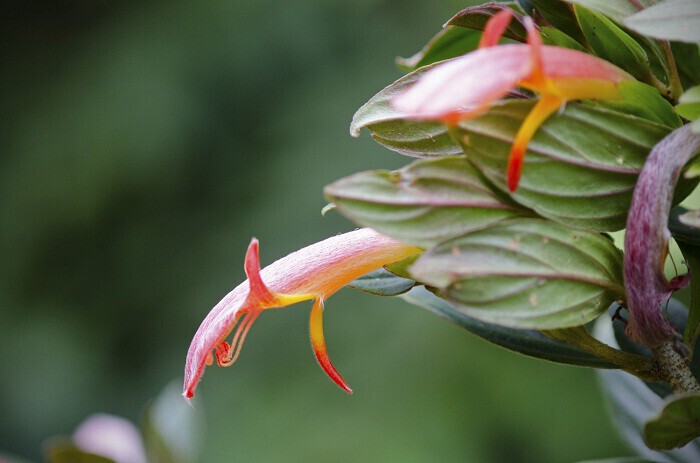You're going to want to go fishing for one of these delightful plants as soon as possible.
Columnea, also known as goldfish plant, is an adorable houseplant, but it can also work in an outdoor garden plant assuming the conditions are right. It features yellow, orange, or red flowers that pop out along its stems and resemble its namesake: the goldfish. Goldfish plant is so fun and beautiful you'll want to add it to your indoor garden immediately. But before you do, there are a few key aspects of growing and caring for the fish-like plant to consider.

What It Likes
Goldfish plant is related to the African violet and lipstick plant, according to Justin Hancock, a Monrovia horticultural craftsman. That means it prefers similar conditions—medium to bright indirect light, watering as the top inch or so of the potting mix dries to the touch, and protection from hot or cold drafts (such as heating or air-conditioning vents). "Grow it in a potting mix developed for houseplants; it doesn't tend to do well in heavy soils," he explains. "It's a charming choice for a bright bathroom or kitchen where there's a little extra moisture in the air (this is especially true for arid climates)."
Planting Outdoors
If you're tempted to plant some in your yard as well, you'll need to make sure the conditions are just right, says Adrienne R. Roethling, director of curation and mission delivery at Paul J. Ciener Botanical Garden. "They can grow outdoors in the summer, but I would refrain from placing them in full sun," she says, adding that they could burn, especially when planted outside in the southern states. If you do move them outside, Roethling says you may find yourself having to water your goldfish plant daily, and that's perfectly fine as long as you make sure the roots don't sit in water for too long or they'll be more likely to rot.
Soil Specifics
The best soil mix for your goldfish plant is two parts potting soil to one part perlite, according to Roethling. "The perlite will aid in airflow and drainage for the roots." As for fertilizer, she recommends fish emulsion fertilizer. "It's completely organic and good for different groups of plants," she says. "You can get both liquid and granular form." If you feel like the fish emulsion is not helping with flower production, she suggests boosting the phosphorus with potash or bonemeal to encourage more buds.
Where to Find Them
Goldfish plants are often sold in nurseries with the hanging plants; many of them have trailing pieces, making them perfect additions to hanging baskets. Due to the nature of their seeds, which are tiny and hard to handle, you may do better with buying an established plant than trying to grow one yourself. These plants do best in USDA hardiness zones 10b to 11b. If you're planting them from seed, be sure to wait until after the risk of frost has passed in your area.